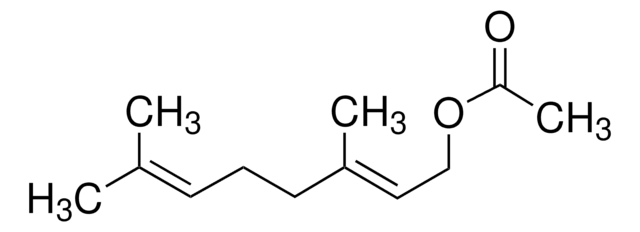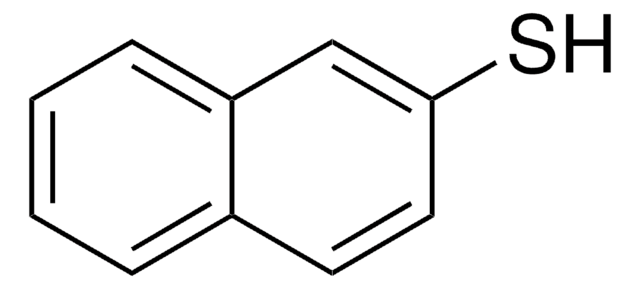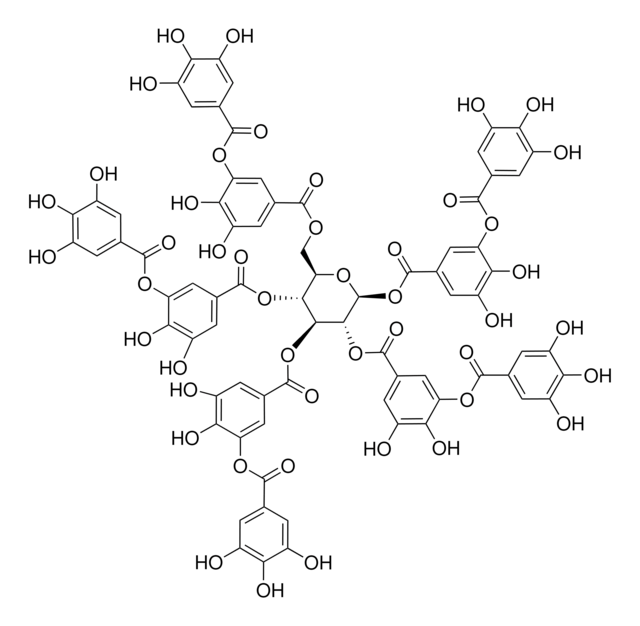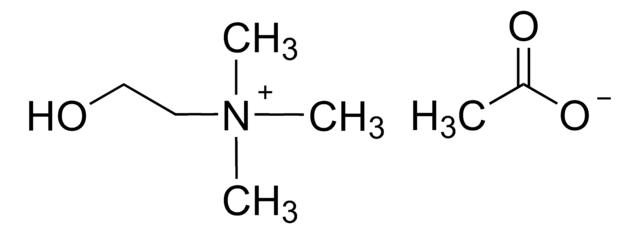427764
Geranic acid
technical grade, 85%
Synonyme(s) :
3,7-Dimethyl-2,6-octadienoic acid
About This Item
Produits recommandés
Qualité
technical grade
Pureté
85%
Forme
liquid
Indice de réfraction
n20/D 1.484 (lit.)
Point d'ébullition
250 °C (lit.)
Densité
0.97 g/mL at 25 °C (lit.)
Chaîne SMILES
C\C(C)=C\CC\C(C)=C\C(O)=O
InChI
1S/C10H16O2/c1-8(2)5-4-6-9(3)7-10(11)12/h5,7H,4,6H2,1-3H3,(H,11,12)/b9-7+
Clé InChI
ZHYZQXUYZJNEHD-VQHVLOKHSA-N
Vous recherchez des produits similaires ? Visite Guide de comparaison des produits
Catégories apparentées
Description générale
Application
- Enhancement of antibiotic properties: Capric acid and geranic acid were used to improve the pharmaceutical properties and antibacterial activity of levofloxacin (Alkhawaja et al., 2023).
- Aryl hydrocarbon receptor modulation: Research on natural deep eutectic solvents including fatty acids like geranic acid has demonstrated their capability to modulate the aryl hydrocarbon receptor independently of traditional ligands, suggesting potential in metabolic regulation and therapeutic applications (Denis et al., 2023).
- Transdermal delivery systems: A study on ionic liquids composed of geranic acid for obesity treatment highlighted their use in transdermal drug delivery systems, presenting a non-invasive alternative for therapeutic management (Lu et al., 2023).
- Antimicrobial and antielastase properties: Geranic acid has been shown to inhibit elastase activity and bacterial growth, offering potential applications in oral health products and treatments for conditions involving pathogenic bacteria and inflammation (Laird et al., 2023).
Mention d'avertissement
Warning
Mentions de danger
Conseils de prudence
Classification des risques
Acute Tox. 4 Dermal - Skin Irrit. 2
Code de la classe de stockage
10 - Combustible liquids
Classe de danger pour l'eau (WGK)
WGK 3
Point d'éclair (°F)
271.4 °F - closed cup
Point d'éclair (°C)
133 °C - closed cup
Équipement de protection individuelle
Eyeshields, Faceshields, Gloves, type ABEK (EN14387) respirator filter
Certificats d'analyse (COA)
Recherchez un Certificats d'analyse (COA) en saisissant le numéro de lot du produit. Les numéros de lot figurent sur l'étiquette du produit après les mots "Lot" ou "Batch".
Déjà en possession de ce produit ?
Retrouvez la documentation relative aux produits que vous avez récemment achetés dans la Bibliothèque de documents.
Les clients ont également consulté
Notre équipe de scientifiques dispose d'une expérience dans tous les secteurs de la recherche, notamment en sciences de la vie, science des matériaux, synthèse chimique, chromatographie, analyse et dans de nombreux autres domaines..
Contacter notre Service technique











